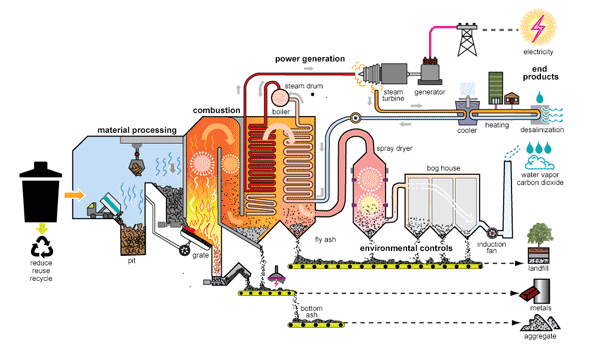

Waste-to-energy facilities function by burning municipal solid waste (MSW), commonly known as garbage or trash, to generate steam through a boiler. This steam is then harnessed to power an electric generator turbine.
Municipal solid waste (MSW) is a blend of energy-rich materials, encompassing paper, plastics, yard waste, and wood-based products. About 85 kilograms out of every 100 kilograms of MSW can be employed as fuel for generating electricity. In this process, waste-to-energy plants transform 2,000 kilograms of garbage into ash weighing between 300 and 600 kilograms, resulting in an approximately 87% reduction in waste volume.